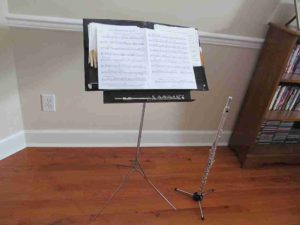Underperforated, Overglued, and Insufficiently Reinforced
So when I encounter a commercial product for which the designer seems not to have taken into consideration the range of people that might use it, I mutter to myself, “Men!” Perhaps I am wronging men by saying that, but it really does seem as if many products were not tested by anybody but the guys who designed and built them.
Case in point: rolls of paper towels and toilet paper that don’t rip off evenly along the perforations. The way to tear these things is to provide the proper degree of “impulse” (a word from physics meaning a sudden strong force) while jerking the paper sideways at about a 45° angle. If the paper is properly perforated, this works every time. But if the paper is not properly perforated – if the perforations are not long enough or not all the way through or if they tend to fade out at one edge — it requires a great deal of force evenly exerted over the appropriate line of the jerk in order to get the paper to tear in a straight line, if it does even then.
For the fluffier brands of toilet paper, almost no amount of impulse will work for weak or almost nonexistent perforation areas, which seems to be the case pretty frequently even with premium-priced rolls. This is of course a failure of quality control the production goal (based on customer expectation) is that it be completely perforated. The cheaper paper found in public restrooms need not even be mentioned here because even with perforations it is so stiff that it may not tear at all if you don’t use both hands – which is hard since as we all know the toilet paper holder is usually placed to one side.
For paper towels with adequate perforations, a person with a long arm can rip off a perfect piece easily, but due to the width of the roll, this is not always possible for people with shorter arms (who are tearing across their bodies). When somebody else advises me to use both hands for paper towels, I snort in derision. Very often a person has only one hand to use, the other being covered in damp flour or butter or soapsuds. If you have a fixed towel holder, as I do, then there should be no excuse for paper towels not to tear off evenly with a good jerk by an ordinary person, say an old woman.
It takes energy and sharp blades to cut clean perforations. I am therefore of the opinion that the manufacturers of paper towel and toilet paper rolls have taken the low road and saved themselves money by minimizing perforator energy and blade sharpening costs.
Another problem with commercial products that in the past seldom used to be a problem is the overgluing of boxes and other overpacks. My toothpaste is made for sensitive teeth and it works well, so I can’t just switch to another product. But it is a sore trial every time I finish a tube and have to open another box to extract a new tube. The end is glued down completely over the whole area of the top flap, not just spot-glued. Thus it is difficult or even impossible to insert a fingernail between the top and side flaps at the end to rip it open. Sometimes I do get my fingernail in, but I risk having my fingernail torn off when I try to jerk open the box. I have to resort to cutting the box open with scissors nearly every time.
Besides the outer box, my toothpaste manufacturer puts a foil seal over the toothpaste exit hole in the tube. You have to grip a tiny, tiny tab on the periphery of the seal and then try to pull it off. This requires quite a degree of grip strength over the very small tab area – something more on the order of what a healthy younger man might be able to do easily than what an older person with some arthritis in her fingers could do. I have sometimes had to take a pair of tweezers in order to grasp the tab so that in effect I could use my whole hand to overcome the adhesion.
With pill bottles there is usually a paper seal whose diameter is much greater than the toothpaste seal. So I resort to using scissors: I grip the handles in reverse and then stab downward through the seal. Then I am able to push my forefinger down through the hole and tear the seal off the bottle, albeit most often in two or three pieces. It is very satisfying to stab the paper, I admit, like a bonus for my trouble in getting out the scissors.
With food packaging, there are many containers that are opened to take out only part of the contents and then reclosed, e.g., boxes of crackers. Thus in the top of the box there is a little tab and a slit into which the tab may be tucked to keep the container closed. However, in addition to the minimal perforation of the slit, which leads to tearing the box top when you try to push open the slit, the flaps on the top are nowadays often glued down so hard that you can’t detach the flaps without tearing them and the tab.
I have heard many people complain about those plastic overpacks that encase everything from batteries to screwdrivers to nasal spray to toys. It used to be that you could get a fingernail between the paper backing and the plastic cover and tear them apart. Not any more! The two are mated so tightly nowadays that they seem to be fused. So again with the scissors, but this time using them to cut the plastic….which, I have read, is bad for the blades.
Now, surely the manufacturers realize – or do they? – that when people use scissors to cut open tightly sealed packaging, the scissors may slip and cause an accident. As a person with a lot of professional safety training, I think that overgluing fosters accidents. How is that consumer-friendly? Some men whip out their knives to open packaging, but given the instability associated with holding a package and slicing open the irregularly shaped plastic, it would seem that even more risk is involved with a knife.
I like a certain brand of cereal and over many years I have bought hundreds of boxes of it. At one point, some years ago, the box was redesigned to be taller and not as deep. I have read that many cereal and other food boxes stored in pantries between uses are now made that way to accommodate people’s desire to make more use of the empty space above the boxes when they are sitting on standard-spaced shelves and to make more side-to-side space. Well, that would be fine except that the manufacturers seem to have made the box walls thinner along with taller. So the sides cave in when you pick up the box. This makes it very hard to lift the box, tip it, and pour a controlled amount out of it. I would be willing to pay a little more for thicker cardboard, but that of course is not an option. (It is partly a practical matter: the manufacturing machine tolerances are undoubtedly set for the thinner wall, so you can’t just put in thicker cardboard.)
One thing that seems to frustrate a whole lot of people is water bottles with overly flexible walls. Every time they open one, they have to grip it tightly in order to get the cap to turn. But then when the cap comes off, the water spurts out of the bottle onto their clothes because the grip has reduced the bottle volume available for the water to fit into. One solution is to fill a rigid water bottle of one’s own before going off, say on a hike. But then when the water is all gone and one has to refill with purchased water, the drenching occurs again.
Of course, the manufacturers know about all these underperforation, overgluing, and structural instability problems – people complain all the time about them in their reviews of these products. But as long as people are willing to cope, or have to cope because there is no practical alternative, there is no incentive for the manufacturers to do anything different. What I would say to them is this: if you don’t make it easy for people to use your product, don’t expect brand loyalty. When the day comes that people find an adequately similar product that avoids these packaging and detachment hassles, they will drop you in a instant and switch to that other product. And rightly so.





